#balanchine ballet
Explore tagged Tumblr posts
Text
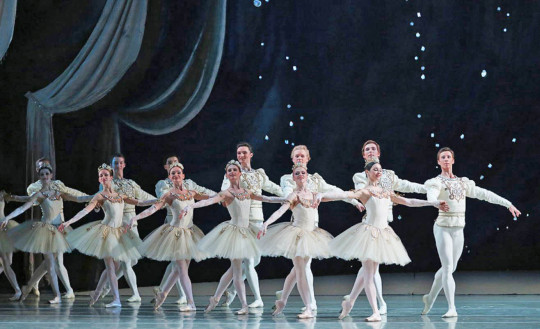
Above: the Maryinsky Ballet in the Diamonds section of Jewels. Photo: Kassir St. Petersburg
The New York Times has several new articles on the New York City Ballet to mark its 75th Anniversary Season, which opens Sept. 19. I'll be posting them all.
CITY BALLET AT 75
The Long Life and Long Reach of George Balanchine’s Butterflies
Balanchine didn’t think his ballets would last. But many have become classics, the cornerstone of repertory not just at City Ballet but around the world.
By Brian Seibert
While celebrating its 75th anniversary this fall, New York City Ballet is performing 18 ballets by its founding choreographer, George Balanchine. But to get a sense of the global standing of Balanchine, 40 years after his death, other numbers might be more telling. Last year, for instance, around 50 other ballet companies across the world performed his works, about 75 dances in total.
Balanchine likened his ballets to butterflies: “They live for a season.” But they have lasted much longer than that. They have become classics, cornerstones of the international repertory, 20th-century equivalents of 19th-century staples like “Swan Lake,” danced everywhere by all the major ballet companies and most of the minor ones, too.
These ballets, like Balanchine, emerged from the same Russian Imperial tradition as “Swan Lake,” but were shaped—as he was—by America, and by modernism and other 20th-century searches for the new. Always intimately connected to music, they sometimes told stories and sometimes, like music, were more abstract arrangements of forms and energies. They stretched ballet—in technique, in how daring and dynamic it could be, in how little outside of itself it needed — and were unparalleled in range and influence, so much so that the state of ballet is often framed as a question: Where is the next Balanchine?
City Ballet still performs by far the most Balanchine—the most ballets, the most often—but performances by other companies probably reach as many or more people, certainly in more places. All these performances, though, are connected to New York City Ballet, because the dissemination of his works remains a matter of lineage—of connections to Balanchine.

Above: Ballet Imperial (Tchaikovsky Piano Concerto #2) performed by the Paris Opera Ballet, with Valentine Colasante and Pablo Legasa. Photo: Agathe Poupeney
Before City Ballet became a durable laboratory and library for Balanchine’s choreography, he often worked as a choreographer for hire. That’s why American Ballet Theater dances “Theme and Variations,” which he made for that troupe in 1947. But few of the companies he created works for have survived, and most of the works that survived are those that became part of the City Ballet repertory. The company was the hub from which his influence radiated.
In the early years of the company, Balanchine sometimes staged works for European troupes with which he was connected: Paris Opera Ballet, the Royal Danish Ballet, what became the Royal Ballet. The reception to his innovations, especially the more radical ones, was highly variable, both abroad and in the more ballet-bereft country he had made his home. There, Balanchine was both generous and prudent with his ballets.
“He was giving them away for free, but he was in control,” said Jennifer Homans, the author of “Mr. B: George Balanchine’s 20th Century.” “Looking at the correspondence, you can see he was careful about who could do it and who couldn’t, and about which ballets could be done by others and which couldn’t.” He staged them himself, or he sent people he trusted. Francia Russell danced with City Ballet from 1956 to 1961. Since 1964, when she became a ballet master at the company, she has staged more than 200 productions of Balanchine ballets for other troupes. “They weren’t many people doing it at the beginning,” she said. “At first, I staged only ballets that I had actually danced.” Later, it became possible to consult films, but Russell didn’t use them much. “I always said I’m staging them the way I danced them when with Mr. B was with us.”
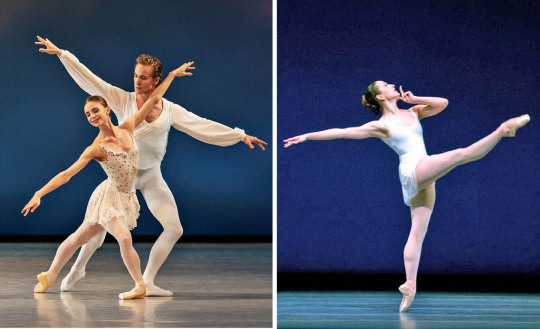
Left: Ida Praetorius and Jón Axel Fransson of the Royal Danish Ballet in Ballo della Regina. Photo: Henrik Stenberg Right: Pacific Northwest Balllet's Carrie Imler in Apollo. Photo: Angela Sterling
It was during the 1960s that City Ballet became a dominant institution, with a custom-built theater in the new Lincoln Center. An exceptionally large grant from the Ford Foundation put City Ballet and its affiliated School of American Ballet at the helm of a program to support ballet and ballet education. Following Balanchine’s recommendations, the foundation granted seed funding to regional troupes like Boston Ballet and Pennsylvania (now Philadelphia) Ballet. Balanchine granted these fledgling companies something nearly as important: some of his works, free of charge.
That process continued as members of City Ballet founded their own companies or became artistic directors. Arthur Mitchell, the company’s first Black principal dancer, erected the repertory of Dance Theater of Harlem, founded in 1969, on a foundation of Balanchine pieces. Some City Ballet dancers found leadership roles in Europe, like Patricia Neary in Switzerland. In 1977, Russell and her husband, Kent Stowell, moved from Frankfurt Ballet to Pacific Northwest Ballet in Seattle and built it into another outpost of Balanchine repertory.
“Mr. B said he trusted me to only ask for the ballets I thought our dancers could do,” Russell said. “And whatever we wanted, it was ‘Of course, dear.’ He never asked for a penny.” These ballets, she added, “were an education in classical dance for our dancers,” a sentiment commonly voiced by artistic directors. After Balanchine’s death, in 1983, the City Ballet diaspora spread further. In 1985, Edward Villella, a City Ballet star of the 1960s and ’70s, transformed Miami City Ballet into a Balanchinian troupe. That same year, Helgi Tomasson, after dancing with City Ballet for 15 years, became artistic director of San Francisco Ballet, a post he held until 2022. None of these and other companies led by City Ballet alumni danced Balanchine exclusively, but there was a family connection. Successors were often in the family, too. Russell and Stowell were followed (in 2005) by Peter Boal, Villella (in 2012) by Lourdes Lopez, both former principals at City Ballet and alumni of its school.

Above: the San Francisco Ballet in Divertimento #15. Photo: Dave Morgan
By this point, acquiring a Balanchine work was no longer “Of course, dear.” Skeptical that his works could last without him, and never much interested in posterity, he left his ballets in his will not to City Ballet but to 14 dancers and colleagues. The George Balanchine Trust was formed in 1987 to bring some order and stability to the licensing and restaging. The stagers it authorized were all dancers who had been with Balanchine in the classroom and rehearsal studio.
Now Balanchine works circulated to places where they had not before been part of the repertory. Russell was the first to stage one in China, in 1987. The next year, she brought one to the Soviet Union — to the institution then known as the Kirov Ballet (now the Mariinsky), where Balanchine had trained in the first decades of the 20th century but where few of the dancers had seen his works or knew much about him.
Always, there have been questions about authenticity. Balanchine frequently changed his choreography—for different dancers and stages—so which was the right version and in whose memory of it? And beyond the steps, was the spirit transferable, the elusive and usually unspoken ideas, the all-important musicality? Disagreements about these questions—applied to companies of dancers not trained in Balanchine’s aesthetic and modifications to technique, but also to City Ballet—were perpetual and often heated. For many viewers, Balanchine after Balanchine wasn’t Balanchine at all, and couldn’t be. Balanchine had suggested as much himself. And now a new phase is coming. As Russell put it, speaking of her generation, “We’re all too old to preserve that tradition in the same way.”

Above: Left: Sandra Jennings of the Balanchine Trust rehearsing Gabriella McCann of the City Ballet of San Diego. Photo: K.C. Alfred Right: Symphony in C, second movement, with Olga Smirnova and Dennis Rodkin of the Bolshoi Ballet. Photo: Damir Yusupov
Lopez, who is 20 years younger, made a similar point. “There aren’t many of us,” she said, “who worked with him and still talk about him as if he were next door.” But she also spoke about dancers, at Miami City Ballet and elsewhere, hungry to learn Balanchine’s aesthetic, dancers born after he died who talk about him as if they knew him.
It is those kinds of people who make Suki Schorer feel positive about Balanchine’s legacy. A City Ballet member from 1959 to 1972, she wrote a book on Balanchine technique and has been teaching at the School of American Ballet for some 60 years. Asked about Balanchine’s influence today, she listed young teachers, trained at the school, who have fanned out across the country.
Silas Farley is one. Born 11 years after Balanchine died, he encountered the Balanchine lineage at the school of North Carolina Dance Theater, which was run by the former City Ballet stars Patricia McBride and Jean-Pierre Bonnefoux. Farley became obsessed with Balanchine lore, which he absorbed deeply at the School of American Ballet and as a City Ballet member from 2013 to 2020.
“I have always had an acute sense that I’m one of the people who has been entrusted with a lot of these ideas and that, God willing, I’ll be here a long time after the people who entrusted those ideas to me,” he said on a call from Southern Methodist University, where he teaches.
His students, he said, are “empowered by all of Balanchine’s cool amendments and extensions of classical technique. They delight in the granular and the grand, the nuances and the capacity to dance more expansively, more freely.” Balanchine’s works, he added, “are such a big part of their understanding of what ballet is.”
Their understanding and everyone else’s. Those works, however altered by time, remain ubiquitous. Nikolaj Hübbe, a Danish dancer who performed with City Ballet from 1992 to 2008 and has led the Royal Danish Ballet ever since, is one of those who believe in their enduring power. “I don’t think I’ve ever worked with a dancer, even if Balanchine was foreign to them, who did not have an epiphany, a wow feeling, dancing his ballets,” Hübbe said. “Our dancers love them, revel in them. There’s a logic that speaks to all classically trained dancers. The choreography sings well. I don’t think that will ever go away.”
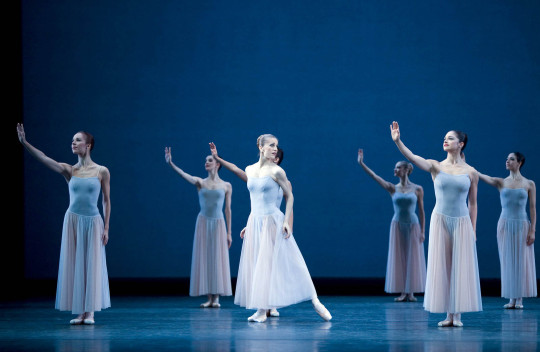
Above: Marianela Núñez and the Royal Ballet in Serenade, 2008. Photo: Johan Persson
#Balanchine#ballet#Balanchine ballet#Balanchine's legacy#rehearsing Balanchine#Maryinsky Ballet#Paris Opera Ballet#Royal Danish Ballet#Pacific Northwest Ballet#San Francisco Ballet#City Ballet of San Diego#NYCB@75#Bolshoi Ballet#Royal Ballet#Brian Siebert#Francia Russell#Lourdes Lopez#Silas Farley#Nikolaj Hubbe
25 notes
·
View notes
Photo

Ballerinas standing on window sill in rehearsal room at George Balanchine's School of American Ballet
Alfred Eisenstaedt, Life, 1936
#ballet#dance#ballerina#1930s#life magazine#ballet dancer#george balanchine#vintage#vintage fashion#school of american ballet#1930s fashion#black and white#photography#photo restoration
5K notes
·
View notes
Text
george balanchine; jewels third act 'diamonds'
396 notes
·
View notes
Text
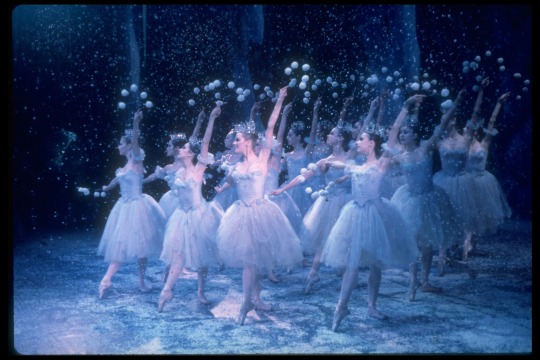


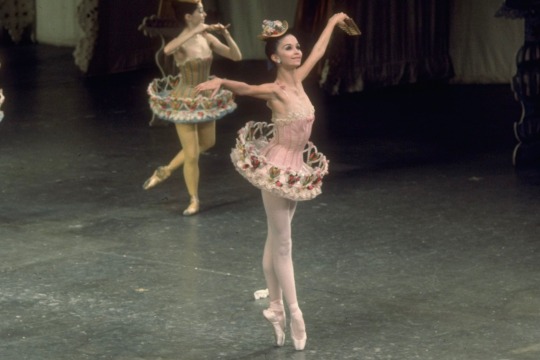
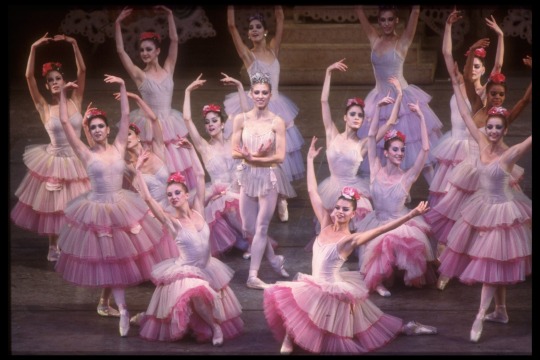
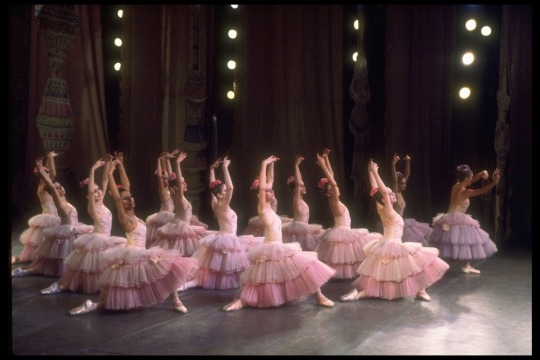
Costumes for George Balanchine’s “The Nutcracker” designed by Barbara Karinska
from The New York Public Library Digital Collections
1K notes
·
View notes
Text

Stanislav Belyaevsky - Hungarian National Ballet - Balanchine’s Prodigal Son
#Stanislav Belyaevsky#Hungarian National Ballet#dancer#danseur#bailarín#ballerino#tänzer#ballet men#boys of ballet#dance#ballet#Prodigal Son#Balanchine
32 notes
·
View notes
Text
instagram
This is the most beautiful ballet promo I have ever seen! I cannot help but notice the classic silhouettes and extreme close-ups from 1960’s Soviet ballet films. A lot of the comments cite the recently restored “The Color of Pomogranates” as inspiration — a film by a Soviet Armenian filmmaker, Panajarov. Why, yes! That, too!
I have never been so excited to see the Firebird - wish I lived close to NYC!
26 notes
·
View notes
Text

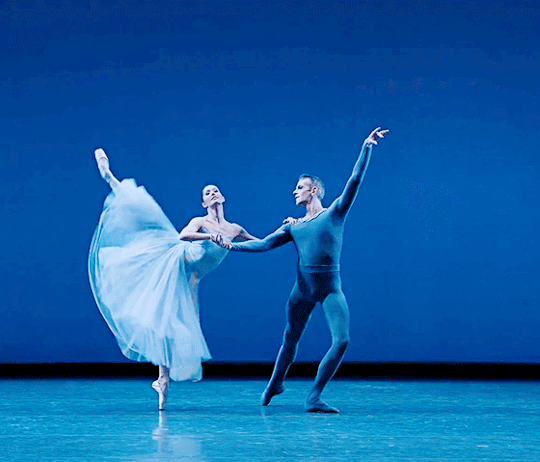
Unity Phelan and Russel Janzen in Serenade (New York City Ballet 2023)
161 notes
·
View notes
Text


Miriam Miller as the Sugarplum Fairy and India Bradley as Dewdrop in George Balanchine's The Nutcracker (New York City Ballet, 2024)
Photos by Erin Baiano
20 notes
·
View notes
Text
Ashley Bouder

Ashley Bouder (New York City Ballet), “Tarantella”, choreo by George Balanchine, music by Louis Moreau Gottschalk, reconstructed and orchestrated by Hershy Kay (Grand Tarantelle for Piano and Orchestra, Op. 67), costume by Barbara Karinska (Varvara Jmoudsky), 2011 Dance Open Ballet Festival, Oktyabrskiy Concert Hall Большой концертный зал Октя́брьский, Saint Petersburg, Russia (April 22, 2011).
Source and more info at Photographer Stas Levshin on Facebook Photographer Stas Levshin on Instagram
Note I: This blog is open to receiving and considering any suggestions, contributions, and/or criticisms that may help correct mistakes or improve its content. Comments are available to any visitor.
Note II: Original quality of photographs might be affected by compression algorithm of the website where they are hosted.
#Dans#Danse#Dance#Danza#Dancer#Dansen#Balet#Ballet#Балет#Ballett#Balletto#Balerino#Balerina#Ballerina#Ballerino#Bailarina#Балерина#Танец#Tänzer#Танцор#2011 Dance Open Ballet Festival#Ashley Bouder#Barbara Karinska (Varvara Jmoudsky)#George Balanchine#Grand Taranttelle for Piano and Orchesta Op. 67#Hershy Kay#Louis Moreau Gottschalk#Oktyabrskiy Concert Hall Большой Концертный Зал Октя́брьский#Stas Levshin Стас Левшин#Tarantella
12 notes
·
View notes
Text

Tamara Toumanova and Roman Jasinski in the first version of Mozartiana, for the Paris-based Les Ballets 1933 season at the Théâtre des Champs-Élysées. It had costumes by Christian Bérard. Published in the October 1933 issue of Vanity Fair.
Photo: George Hoyningen-Huene
#Balanchine#Mozartiana#Tamara Toumanova#George Hoyningen-Huene#Roman Jasinski#Ballets 1933#George Balanchine#Tchaikovsky
124 notes
·
View notes
Photo
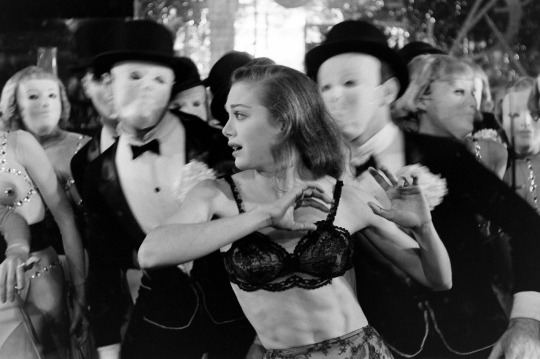
Allegra Kent in Balancine’s production of The Seven Deadly Sins
Gordon Parks, “The Master of Ballet,“ Life, Dec 22, 1958
#dance#ballet#1950s#life magazine#gordon parks#allegra kent#george balanchine#new york city ballet#the seven deadly sins#kurt weill#50s#black and white#photography#vintage
86 notes
·
View notes
Text


george balanchine; jewels third act 'diamonds'
#ballet#george balanchine#jewels#diamonds#ballerina#blue#aesthetic#winter#ethereal#nymphaea's whispers
109 notes
·
View notes
Photo




Serge Lifar in Apollon Musagète, choreographed by Balanchine in 1928 to music by Stravinsky, and with costumes by Coco Chanel, for Diaghilev's Ballets Russes
359 notes
·
View notes
Text

Tanaquil Le Clercq (2 October 1929 - 31 December 2000) and Nicholas Magallanes (27 December 1922 - 2 May 1977), posing on a roof in Venice, wearing their costumes for Metamorphoses, which was produced by the New York City Ballet at the Teatro La Fenice, in September 1953.Music by Paul Hindemith (Metamorphoses on Themes of Weber). Costumes by Barbara Karinska. Choreography by George Balanchine. First given at the New York City Center on November 25, 1952. Photo: Serge Lido.
#Tanaquil Le Clercq#Nicholas Magallane#Metamorphose#New York City Ballet#George Balanchine#serge lido#Paul Hindemit#ballet history#Barbara Karinska
31 notes
·
View notes
Text
My top 5 ballet dream roles
#5- Rubies Soloist (Jewels)
I love the energy of the role and all the petite allegro
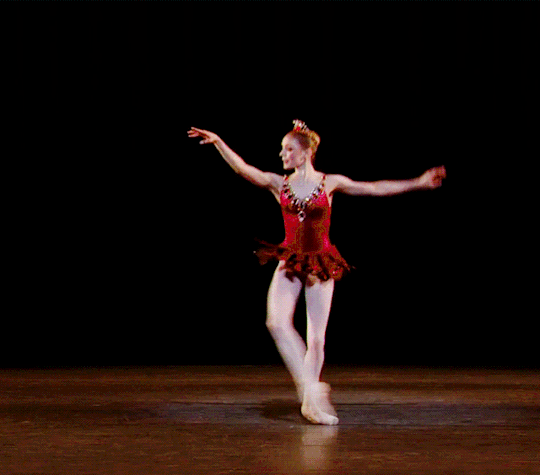
#4- The Firebird (Firebird)
So much drama in this role, I’m also dying to wear the costume
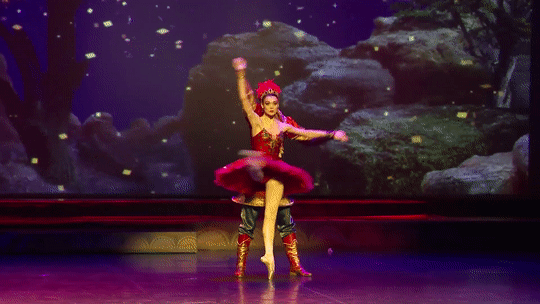
#3- Dark Angel (Serenade)
Even though this role is generally for taller dancers (I’m only 5’5), but I love adagio. Also, serenade for strings makes me cry
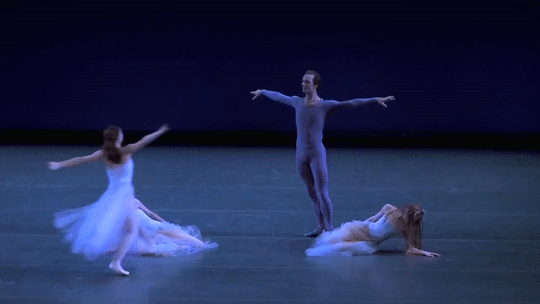
#2- Gamzatti (La Bayadère)
I just love a good diva, and that’s exactly what Gamzatti is. Her wedding variation is my absolute favorite classical variation
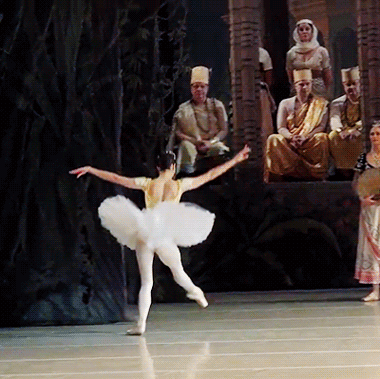
#1- Aurora (Sleeping Beauty)
This would be my dream lead role. The Rose Adagio is probably my favorite section from any classical ballet and I would kill to do it. She also doesn’t have to do the big 32, which makes me so happy because I hate fouettés with a burning passion
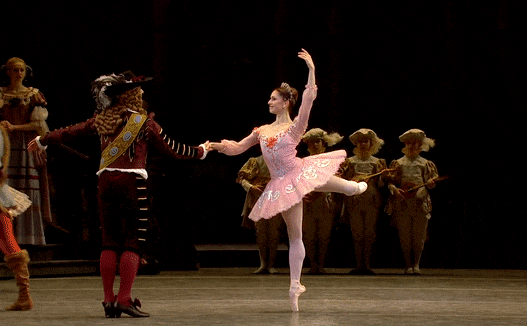
#ballet#ballerina#ballet dancer#dancer#top 5#dream roles#ballerinas of tumblr#sleeping beauty#aurora#rose adagio#gamzatti#la bayadère#serenade#dark angel#tchaikovsky#balanchine#firebird#rubies#jewels#classical ballet#ballet variations
45 notes
·
View notes
Text
Jurgita Dronina...
Is leaving the NBC at the end of this season and will return to Europe for the final chapter of her career. She is one of the most underrated ballerinas dancing today and I'm indebted to her for helping to make Emeralds (the overlooked Jewel) make sense to me. When I discovered Jewels, there was this sense that Emeralds is what you had to endure to see the other two masterpieces. In comparison, Emeralds felt sleepy and pointless, lacking tension or drama. But after watching Jurgita Droning dance the solo variation, imbued with both mystery and joy, a light went off. Emeralds is about the sheer pleasure of dance. The dancer must inhabit the music and movement completely, almost forgetting the audience — and only then it becomes magical! I have seen so many versions of this variation — and honestly slept through quite a few. But hers is incandescent. I'm sure that I've shared this before, but here it is again:
youtube
#ballet#Jurgita Dronina#Jewels#Emeralds#balanchine#faure#national ballet of canada#wish I lived closer to Toronto#Youtube
20 notes
·
View notes